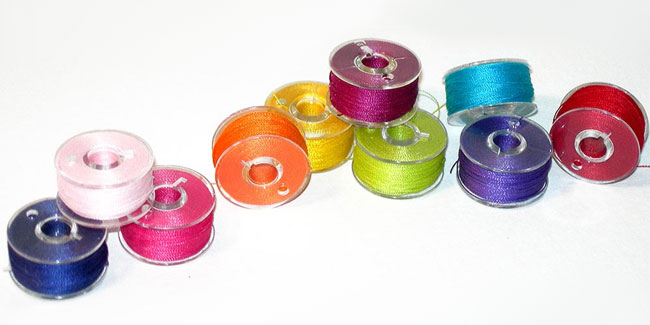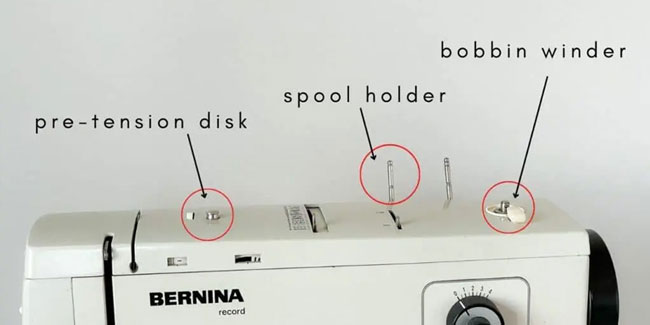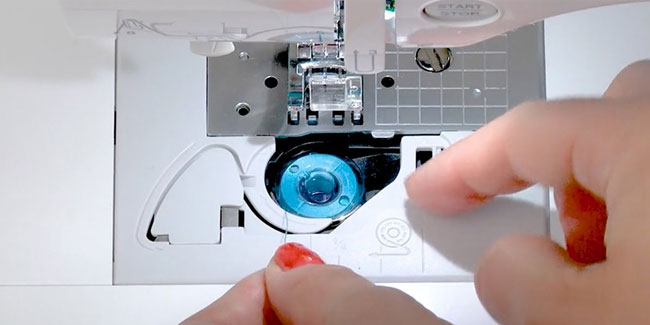What exactly is a bobbin, and what does it do? If you’re unfamiliar with sewing machines, the term “bobbin” may be obscure. The bobbin is a tiny, round, very important, and tidy component that is utilized in the stitching of a sewing machine. It keeps the machine’s threads working properly by maintaining their stability.
What is a Bobbin?
A bobbin is a tiny, plastic or metal spool that contains thread and is kept in the machine’s lower compartment. The bobbin stores the machine’s lower thread. The bottom thread from the bobbin is caught by the top thread that passes through the needle for each stitch.
Bobbins are an important component of the sewing process that you’ll need a lot of. You’ll need a variety of bobbins for each color thread you intend to use on top of your machine, as well as one or two extra in case something goes wrong.
To guarantee proper tension and neat stitching, the bobbin thread and the thread at top spool of must be of comparable quality. They should ideally be the same color, but this is not essential. Therefore, having a sufficient supply of bobbins simply makes sewing much easier.

Bobbin for Sewing
Here are some key information about sewing machine bobbins:
Bobbin Types. Bobbins come in a variety of materials, including plastic and metal, and can also be of different sizes. There is no such thing as a one-size-fits-all bobbin. Different brands of machines can have varied bobbins, in addition there are many different types of sewing machines, as well as several methods for inserting the bobbin into the casing. Always check your sewing machine’s instruction book for more information.
Do not overfill. If a plastic bobbin is filled too much, it will puff up. When the bobbin is filled to capacity, it pokes out and does not fit properly into the bobbin case. The sewing machine is a highly accurate device, and an inflated plastic bobbins disrupts the device’s workings.
Direction. Thread the bobbin correctly for the machine you’re using so it spins in the correct direction. Make sure the thread engages with the tension of the bobbin case by clicking into place.
Loose threads. Never allow a thread to stick out of the bobbin since this may get caught on the machine as the bobbin spins.
More bobbins. If possible, stock up on bobbins since the more you have of the color threads you want to use, the less time you’ll spend threading and winding them.
Bobbin for Knitting
Bobbins are not only used in the sewing machine industry. The term “bobbin” refers to spools and cylinders containing yarn, wire, or string in other industries as well. Bobbins are used by weavers and knitters.
Threading the bobbin
When it comes to bobbins, there’s a lot to know. It’s crucial to learn how to wind a bobbin, where to setup the bobbin, and how to deal with those terrible tangled bobbins messes. These are the ones that resemble a bird’s nest in your sewing machine.
Depending on the type of sewing machine you have, winding and inserting a bobbin may be slightly different. Be sure to read the directions in your instruction booklet.
If a bobbin is not correctly inserted or wound, the machine stitching and tension will be affected. This portion of your sewing abilities should be received during the demonstration on purchasing your machine.
Winding the Bobbin
If you know what you’re doing, winding the bobbin should not be difficult. It’s also crucial to remember that you should always wind your bobbin before threading your needle and machine, regardless of the type of machine or sewing method you’re using.
- Remove the old bobbin from its casing with rised needle. Check to see whether the bobbin is completely empty.
- Switch off the clutch at the side of the machine.
- Slide the empty bobbin over the winder pin of the bobbin winder.
- Place the thread spool on the spool pin and around the thread guide, then over the bobbin. The end of the thread should be in the tiny hole of the bobbin.
- Turn the bobbin winder to the right and put on the foot pedal. The clutch is disengaged so that the needle does not descend and ascend as you wind. Some models may have a button instead of a foot switch.
- Wind the bobbin until it is full.
- Re-engage the clutch by pushing the bobbin winder to the right.
If you have followed this step-by-step tutorial carefully, you should be able to wind a bobbin without much difficulty.

Installing the bobbin
Depending on how they are put in a sewing machine, bobbins can be categorized as front- or top-loaders.
Switch off your sewing machine and unplug it from the wall before loading a front-loading bobbin. Raise the needle to its maximum position. Fit your wound bobbins into their bobbin casing and hold the lever of the case while pushing it onto the pin. When you hear your bobbin snap into place, close the bobbin case and begin sewing. Allow at least three inches of thread from the bobbin.
Switch off the sewing machine to load a top-load bobbin. Remove the bobbin cover plate with rised needle. Wind your bobbin, then replace it in the bobbin case and twist in the direction indicated on your user guide. Fix your bobbin and replace the cover plate.

Basic Troubleshooting the Bobbin
If you think your sewing machine’s problems are linked to a defective bobbins, check these simple solutions first:
- Rethread – First of all, you need to check if you have the bobbin threaded correctly.
- Clean – The bobbin must fit properly into the bobbin casing. There should be no extra threads or fluff in the bobbin casing. The thread should come up quite easily after the bobbin has been threaded.
- Needle – Make sure you’re using the right needle for the material you’re working with. A needle that is too thin or not fastened correctly can bend and this will lead to upset your tension.
- Bobbin type – If you have a few sewing machines, it’s easy to make the mistake of threading the wrong bobbin. Make sure your bobbin is from the correct sewing machine.
Bobbin FAQ
Question: Can a Sewing Machine Work Without a Bobbin?
Answer: A bobbin is required for all home sewing machines. Moreover, you definitely need not just a bobbin for sewing, but a bobbin of the right type and size for your sewing machine model.
Question: What Keeps a Bobbin in Place?
Answer: A bobbin case keeps the bobbin in place. This might be connected to the machine or may be a detachable piece. The bobbin case maintains tension in the thread emerging from the bobbin and is an essential component of your sewing machine.
Question: Which is Better Metal or Plastic Bobbins?
Answer: Both plastic and metal bobbins have their pros and cons. For example, metal bobbins are more difficult to deform, but they are more expensive. Also, if your sewing machine uses a plastic bobbin, you won’t be able to use a metal bobbin.
Question: What is a Bobbin Winder?
Answer: A bobbin winder is a tool that comes with your sewing machine, and it’s specifically designed to wrap your bobbin. The winder will spin to wind thread onto the smaller bobbin from a big spool that will be installed inside your sewing machine.
Final Words
Keep your sewing machine well oiled and clean at all times to get the best results. To give you the most performance, your sewing machine and bobbin need care. In other words, a sewing machine needs to be taken care of to work like a song.
We hope you find our easy guide on sewing machine bobbin useful. Thank you for taking the time to read this!

